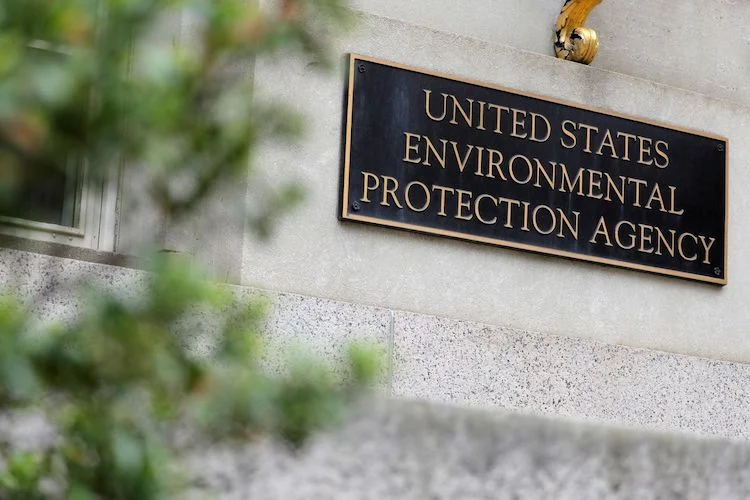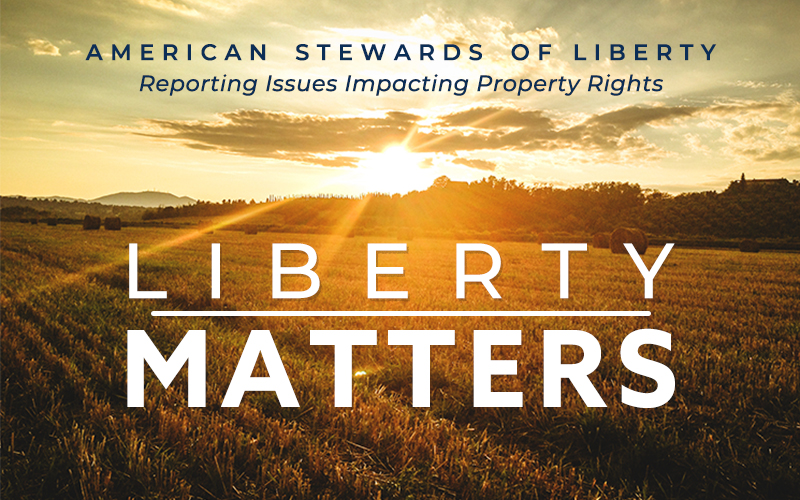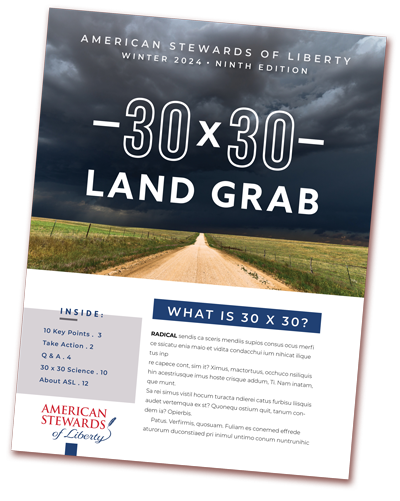(Part 1 of a 2 Part Series)
The State of Texas has a long history of opposing the Environmental Protection Agency’s (EPA) regulatory edicts, but interestingly, the Sunset Advisory Commission’s Staff Report on the Railroad Commission of Texas appears to adopt EPA’s anti-industry policies inundating our nation.
Over the next several weeks, ASL will publish a three-part series dealing specifically with how federal agencies are directly affecting Texas laws and influencing the way state agencies are implementing policies and regulations.
Our three-part series will include: (1) the Environmental Protection Agency’s (EPA) influence over the Texas Sunset Commission’s recommendations for the Railroad Commission of Texas (RRC); (2) the Federal Rail Authority’s control over the Texas Department of Transportation in their development of the High Speed Rail from Dallas to Houston; and (3) the U.S. Fish and Wildlife’s refusal to defer to a five state management plan for the Lesser Prairie Chicken, which included Texas.
The Texas Sunset Advisory Commission is a 12-member legislative commission tasked with identifying and eliminating waste, duplication, and inefficiency for more than 130 state agencies. It questions the need for each agency, looks for duplication of services and programs, and considers new and innovative changes to improve each agency’s operations and activities. [1]
However, the Commission’s staff departed from that duty when they issued recommendations for the Railroad Commission of Texas that appear beneficial or innocuous, but in reality are alarmingly similar to our current EPA’s business-destroying agenda.
We’ve seen this play before, where in an effort to show compliance, states and local governments incorporate a federal wish list of policies that the federal agency themselves would have a hard time implementing and enforcing. The state agency then becomes the enforcer for the federal agency.
It appears this may be happening through the Sunset Commission’s Report for the RRC, by suggesting policies that mirror the EPA’s “Next Generation Compliance” process[2] be adopted by the RRC.
This “Next Generation Compliance” might sound like a noble advance and an efficient use of government resources to promote law and order, however, when read closely, it is clear that the EPA’s manifesto is to: (1) design regulation and permits that make it easier for it to impose its climate change agenda on businesses and states; (2) employ technology and expand “transparency” in ways that will enable the public, like environmental activist groups, to help the EPA push its agenda by bringing pressure on businesses and the states; and (3) require companies to collect and electronically report massive amount of data to be submitted to regulatory agencies to prove continual compliance.
This will allow agencies to mine for potential regulatory violations, putting citizens and businesses in the untenable position of having to self-report, or some would say self-incriminate, potentially leading to a multitude of civil and criminal prosecutions against hard-working, tax-paying individuals.[3]
The Texas Sunset Commission recommendations encourage the incorporation of these policies into Texas law, which essentially is turning state agencies like the Railroad Commission, charged with environmental jurisdiction, into puppets of the federal regulatory empire. Why does the RRC want to do the EPA’s job for them? Shouldn’t they be protecting Texas industries instead of exposing them to the very federal agencies that want to see a key economic engine of the state shut down? The EPA’s burdensome and antagonistic approach toward businesses is well documented.
Below are four comparisons of the EPA’s Strategic Plan FY 2014-2018 to key components of Issue 3 of the Sunset Advisory Commission Staff Report:
1. Sunset Commission Staff Report Recommendation: “Require the Railroad Commission to develop a strategic plan for the Oil and Gas Division that tracks and measures the effectiveness of monitoring and enforcement.” [4]
EPA Agenda: “To achieve the strategic goals, objectives, and measures set out in this Plan, we will track progress through annual performance measures which are presented in EPA’s Annual Performance Plans and Budgets [5] … In promulgating rules, developing policies, and targeting compliance monitoring and enforcement, the EPA has always welcomed and considered relevant data from all sources. The EPA will need to work closely with states …” [6]
2. Sunset Commission Staff Report Recommendation: “Require the Railroad Commission to develop in rule a process for issuing expedited penalties for minor violations.” [7]
EPA Agenda: “The use of expedited settlement agreements (ESAs) has been an important aspect of the Environmental Protection Agency’s (EPA’s) compliance assurance and enforcement program for many years.” [8]
3. Sunset Commission Staff Report Recommendation: “Direct the Railroad Commission to accurately track and report the number of oil and gas violations annually.” [9]
EPA Agenda: “EPA’s regional offices work with state and tribal governments to ensure compliance with our nation’s environmental laws.” [10]
EPA Agenda: “In conducting the State Review Framework, EPA collaborates with each state on reports. These reports allow EPA to track recommendations for states to improve their enforcement programs.” [11]
4. Sunset Commission Staff Report Recommendation: “Direct the Railroad Commission to develop a definition of repeat violations in rule and report the number of repeat violations on its website.” [12]
EPA Agenda: “A repeat violator will likely face a civil judicial lawsuit. And the most serious violations that are the result of deliberate or negligent actions (including serious repeat violations) will be handled as criminal prosecutions.” [13]
EPA Agenda: “Repeat violations are ineligible [for penalty mitigation], i.e., the specific (or closely related) violations have occurred at the same facility within the past 3 years or those that have occurred as part of a pattern at multiple facilities owned or operated by the same entity within the past 5 years.” [14]
The stark similarity between the Sunset Commission’s policy recommendations and the policies currently in place at the EPA is alarming.
The EPA’s Strategic Plan names “addressing climate change” as its number one goal, an Obama Administration priority that has been put forth in the President’s Climate Change Action Plan published June 2013. (Ironically, the state of Texas, along with several other states, filed a lawsuit in the U.S. Supreme Court which succeeded in blocking Obama’s Clean Power Plan rule, one of the elements of his Climate Change Action Plan.)
The Plan states that “launching a new era of State, Tribal, Local, and International partnerships” will assist in achieving this goal.[15] Furthermore, the Sunset Commission’s review strays from presenting “new and innovative changes” for the RRC and instead proposes changes that merely pattern themselves after the EPA’s hostile regulatory approach that places greater emphasis on heavy-handed enforcement efforts and less on industry and government partnerships.
Adopting these recommendations will align the RRC’s operating procedures more closely with those of the EPA and assist with implementing their hyper-politicized Strategic Plan in Texas.
The RRC will merely become yet another agent of the EPA, placing further economic and political pressure on citizen’s rights, private industry and local businesses that are already in the middle of a contentious political environment and financial downturn.
Don’t let these recommendations be a Trojan horse that introduces more federal incursions into our great state of Texas. We must stop the regulatory creep that continues from Washington, D.C. lawmakers and bureaucrats.
[1] Texas Sunset Commission website, https://www.sunset.texas.gov/about-us
[2] The five Next Generation Compliance components are:
- Design regulations and permits that are easier to implement, with a goal of improved compliance and environmental outcomes.
- Use and promote advanced emissions/pollutant detection technology so that regulated entities, the government, and the public can more easily see pollutant discharges, environmental conditions, and noncompliance.
- Shift toward electronic reporting to help make environmental reporting more accurate, complete, and efficient while helping EPA and co-regulators better manage information, improve effectiveness and transparency.
- Expand transparency by making information more accessible to the public.
- Develop and use innovative enforcement approaches (e.g., data analytics and targeting) to achieve more widespread compliance. (emphasis added)
[3] EPA, Annual Reports and State Review Framework Summaries, https://echo.epa.gov/trends/annual-reports
[4] Commission Staff Report on Railroad Commission, Executive Summary, Issue 3, bullet 1, April 2016, p.4, https://www.sunset.texas.gov/public/uploads/files/reports/Railroad%20Commission%20of%20Texas_Executive%20Summary.pdf
[5] EPA Strategic Plan, FY 2014-2018, p.6, April 10, 2014 at https://www.epa.gov/sites/production/files/2014-09/documents/epa_strategic_plan_fy14-18.pdf
[6] Id. at p.41.
[7] Commission Staff Report on Railroad Commission, Executive Summary, Issue 3, bullet 2, April 2016, p. 4.
[8] EPA Revised Guidance on the Use of Expedited Settlement Agreements, p. 1, November 24, 2014 at https://www.epa.gov/sites/production/files/2014-12/documents/revisedesaguidance.pdf . See also p. 6, “existing ESA programs recognize that there are a variety of ‘minor’ violations that could be covered by an ESA.”
[9] Commission Staff Report on Railroad Commission, Executive Summary, Issue 3, bullet 3, April 2016, p. 4.
[10] EPA Enforcement Annual Results FY 2015 at https://www.epa.gov/enforcement/enforcement-annual-results-epa-regions-fiscal-year-fy-2015
[11] EPA, Annual Reports and State Review Framework Summaries.
[12] Commission Staff Report on Railroad Commission, Executive Summary, Issue 3, bullet 4, April 2016, p. 4.
[13] EPA Region 9, Introduction, Environmental Enforcement and Compliance, https://www3.epa.gov/region9/enforcement/intro.html
[14] EPA Audit Policy, December 9, 2015, https://www.epa.gov/compliance/epas-audit-policy
[15] EPA Strategic Plan, FY 2014-2018, https://www.epa.gov/planandbudget/strategicplan





